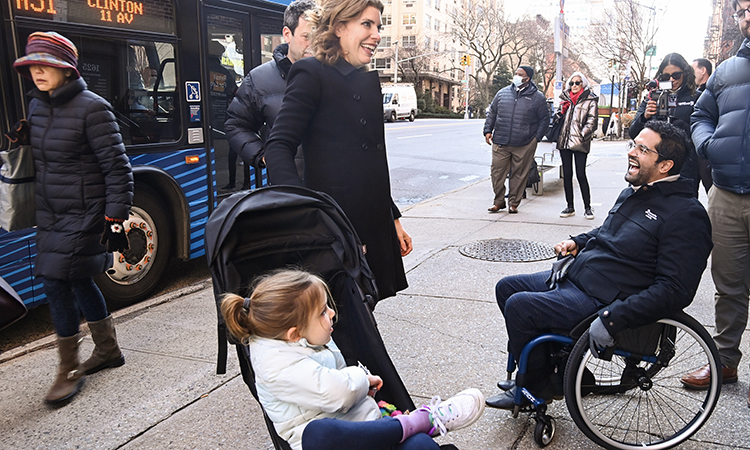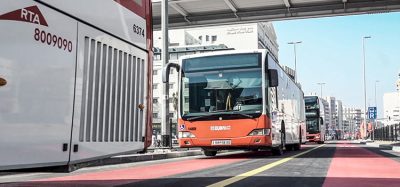MTA improves access for passengers through expansion of open stroller programme
- Like
- Digg
- Del
- Tumblr
- VKontakte
- Buffer
- Love This
- Odnoklassniki
- Meneame
- Blogger
- Amazon
- Yahoo Mail
- Gmail
- AOL
- Newsvine
- HackerNews
- Evernote
- MySpace
- Mail.ru
- Viadeo
- Line
- Comments
- Yummly
- SMS
- Viber
- Telegram
- Subscribe
- Skype
- Facebook Messenger
- Kakao
- LiveJournal
- Yammer
- Edgar
- Fintel
- Mix
- Instapaper
- Copy Link
Posted: 26 January 2023 | Intelligent Transport | No comments yet
By expanding the open stroller programme, the Metropolitan Transportation Authority has taken a meaningful step toward creating a universally accessible transit system.


Credit: Marc A. Hermann/ Metropolitan Transportation Authority - MTA's Chief Accessibility Officer, Quemuel Arroyo; MTA's Bus President/New York City Transit's Senior Vice President of Buses, Frank Annicaro; and City Council Member, Julie Menin, on York Avenue & 91st Street on 24 January 2023, announcing the success of the open stroller pilot programme on MTA buses.
The Metropolitan Transportation Authority (MTA) has announced a significant expansion of the citywide open stroller pilot programme to additional buses serving all five boroughs.
The expansion follows a successful pilot programme launched in September 2022, with a dedicated open stroller space introduced on 142 buses serving the M31, B1, Bx23, Q50, Q12, S53, and S93 routes. The open stroller programme will be expanded to at least 1,000 buses serving additional routes in all five boroughs. The routes to be served by this expansion are currently being determined by New York City Transit (NYCT) and will be announced in the coming weeks.
The expansion will bring stroller access to at least 1,000 buses, including the initial 142 buses involved in the pilot, serving a mix of local and select bus routes. The two seat options – seat removal versus the flip-up seating space – will continue be evaluated to identify the best solution and any potential safety concerns. New York City Transit is also exploring designated stroller spaces being incorporated in all new buses.
The pilot also involved extensive customer engagement and ridership analysis. MTA collected customer feedback on the open stroller pilot via a variety of methods following the commencement of the pilot, with overwhelmingly positive responses. In addition, bus operators on routes participating in the open stroller pilot were asked to record stroller usage, with over 2,500 stroller journeys tallied since the beginning of the pilot.
Stroller demand was highest on the B1 and the S53 routes. Customers and operators alike have reported faster and easier boarding experiences, more comfortable bus rides and more positive interactions with fellow riders on the open stroller pilot routes.
MTA to receive $254 million federal funding to advance accessibility projects
“The bus open stroller pilot shows that we can make meaningful steps toward a universally accessible transit system when we work together with riders, advocates and operators who represent the diversity of our bus users,” said MTA‘s Chief Accessibility Officer and Senior Advisor, Quemuel Arroyo. “I am excited that we are expanding the pilot to give more parents and caregivers improved access to buses, a critical transit lifeline for so many families across our city, and I am proud of the way that we got here by working side-by-side throughout the pilot process.”
“Making transit more attractive and accessible to all customers is a critical part of the commitment to improving customer satisfaction,” said NYC Transit’s Senior Vice President of Buses, Frank Annicaro. “With the permanent expansion of the open stroller programme, customers travelling with strollers can look forward to a bus system that welcomes them, while also ensuring that customers with disabilities have the space that they need.”
The stroller space will allow customers with young children to board and ride the bus without needing to fold their stroller first. As with the current pilot, the stroller space on the buses in the pilot expansion will be either an open space near the rear door, or a space created by flipping up two side-by-side seats, depending on the bus model.
The additional buses participating in the open stroller programme will be identified with a stroller decal on the outside of the bus that customers can easily see before boarding. Once inside the bus, the designated space will be identified with a similar decal.
The designated open stroller spaces are entirely separate from existing priority seating for bus riders with disabilities. A bus customer boarding with a wheelchair will still have the same number of designated spaces.
“I am pleased to see the immediate success of the Open Stroller pilot programme,” said New York City Council Member, Julie Menin. “Being a parent and traveling with a young child in the city can be difficult and, at times, cumbersome. Not only will providing a dedicated space for open strollers make the lives of parents and caregivers easier, but it makes for a smoother ride for other New Yorkers. The open stroller initiative is a necessary accommodation and I look forward to the expansion of the Bus Open Stroller Program to help all straphangers.”
If you liked this, you may also be interested in:
Related topics
Accessibility, Passenger Accessibility, Passenger Experience, Public Transport, Vehicle & Passenger Safety
Related modes
Bus & Coach
Related cities
New York City
Related countries
United States
Related organisations
Metropolitan Transportation Authority (MTA), New York City Transit (NYCT)
Related people
Frank Annicaro, Julie Menin, Quemuel Arroyo









